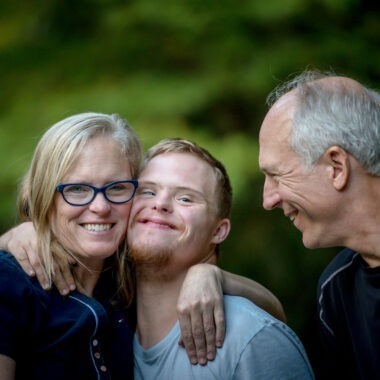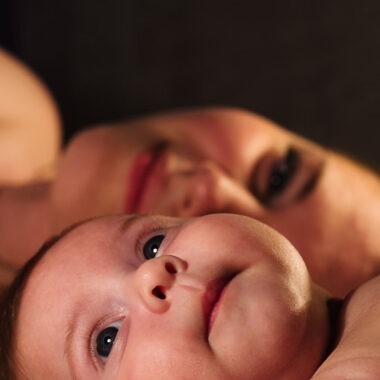Many new parents find themselves unfamiliar with the signs and symptoms of autism in their newborn babies. Early detection and intervention are crucial for providing children with the best care and support, aiding in their development and milestone achievements, and simplifying the parenting journey. Not only does this aid in their development and milestone achievements, but it also streamlines the parenting journey.
While the idea that your child might be autistic may be unsettling for some parents, it’s important to recognize that autism is not a disease but rather a neurotype. Although it can be daunting to acknowledge that your child may be different, embracing this reality sooner rather than later equips you with the tools and resources needed to support your toddler’s growth effectively.
Autism is more common than you might think, with recent studies estimating that approximately 1 in 54 children in the United States is diagnosed with ASD. While every child is unique and develops at their own pace, recognizing the early signs of autism can be key to ensuring that children receive the support and intervention they need to thrive.
It’s also crucial to be aware of the early signs of autism spectrum disorder (ASD), a neurodevelopmental condition that affects how a child interacts, communicates, and behaves. Today, we will delve into the multifaceted world of autism spectrum disorder (ASD), exploring its definition, spectrum, prevalence, and early signs in babies and toddlers as well as the steps parents can take if they have concerns about their child’s development. By being informed and proactive, we can help children with autism reach their full potential and lead fulfilling lives.
What is Autism Spectrum Disorder (ASD)?
Autism Spectrum Disorder (ASD) is a complex neurodevelopmental condition characterized by challenges in social interaction, communication, and behavior. It is referred to as a “spectrum” disorder because it encompasses a wide range of symptoms, skills, and levels of impairment that can vary greatly from person to person. Each individual with ASD is unique, and symptoms may manifest differently in each case.
The term “spectrum” in ASD acknowledges the diversity and complexity of the condition, recognizing that no two individuals with autism are exactly alike. While some individuals may have mild symptoms and lead relatively typical lives, others may have more severe challenges that require significant support and intervention.
Some of the broad range of symptoms and characteristics that are associated with ASD include:
- Repetitive Behaviors: Engaging in repetitive movements or behaviors, such as hand-flapping, rocking, or repeating phrases or words.
- Restricted Interests: Intense focus on specific topics or interests, often to the exclusion of other activities or subjects.
- Sensory Sensitivities: Heightened or reduced sensitivity to sensory stimuli, such as sounds, textures, smells, or tastes.
- Social Communication Challenges: Difficulty with understanding and using verbal and nonverbal communication, such as gestures, facial expressions, and tone of voice.
- Difficulty with Transitions: Challenges with transitions and changes in routine, leading to anxiety or distress.
Autism is not restricted to a certain age, race, gender or geographic location. In fact, Autism Spectrum Disorder affects people of all races, ethnicities, and socioeconomic backgrounds all around the world. According to the Centers for Disease Control and Prevention (CDC), ASD is estimated to affect approximately 1 in 54 children in the United States.
Interestingly enough, boys are four times more likely to be diagnosed with ASD than girls.
The diagnosis of autism typically involves comprehensive evaluations by healthcare professionals, including developmental pediatricians, psychologists, and speech-language pathologists. These evaluations assess a child’s behavior, communication skills, social interactions, and developmental milestones to determine if they meet the criteria for ASD.
While the prevalence of autism has increased over the past few decades, experts believe that this rise is due in part to greater awareness, improved diagnostic criteria, and increased access to services and support.
ALSO READ: Down Syndrome: Busting Myths & Raising Superheroes
What Are Some Common Early Signs of Autism in Babies?
Recognizing the early signs of autism in babies and toddlers is crucial for early intervention and support. While every child develops at their own pace, there are certain behaviors and characteristics that may indicate the presence of ASD, particularly when observed consistently and in combination with other symptoms.
Some common early signs to be aware of include:
Repetitive Behaviors and Restricted Interests
- Repetitive Movements: Engaging in repetitive movements or behaviors, such as hand-flapping, rocking, or spinning objects.
- Fixation on Objects: Intense focus on specific objects or parts of objects, often to the exclusion of other activities or interactions.
- Preference for Routine: Resistance to changes in routine or difficulty transitioning between activities.
Sensory Sensitivities
- Overwhelmed by Loud Noises: Reacting strongly or covering ears in response to loud noises, such as vacuum cleaners, sirens, or crowded environments.
- Unusual Sensory Responses: Heightened or reduced sensitivity to sensory stimuli, such as covering ears in response to loud noises or seeking out specific textures or sensations.
- Avoidance of Certain Textures: Displaying aversion or discomfort to certain textures or sensations, such as avoiding touching certain fabrics or textures.
- Intense Reactions to Bright Lights: Exhibiting discomfort or distress in bright or fluorescent lighting conditions, including squinting or covering eyes.
- Unusual Responses to Temperature Changes: Reacting strongly to temperature changes, such as becoming distressed in warm or cold environments.
- Avoidance of Specific Food Textures: Displaying aversion or refusal to eat certain foods based on their texture, such as preferring only smooth or crunchy foods.
Social Communication Challenges
- Limited Eye Contact: Babies and toddlers with autism may have difficulty making eye contact or sustaining eye contact during interactions with caregivers or peers.
- Lack of Social Smiling: Delayed or absent social smiling in response to others’ smiles or social cues.
- Limited Babbling: Reduced frequency or variety of babbling sounds, such as cooing or babbling back and forth in response to speech.
- Delayed Response to Name: Not responding to their name being called or appearing unaware of their surroundings.
- Difficulty with Joint Attention: Difficulty sharing attention with others, such as pointing to objects of interest or following someone else’s gaze.
Difficulty with Transitions
- Resistance to Changes in Routine: Becoming upset or agitated when transitioning from one activity to another, such as leaving the house or ending playtime.
- Need for Predictability: Preferring predictable and structured routines and becoming anxious or distressed in unfamiliar or unpredictable situations.
- Difficulty Transitioning Between Activities: Demonstrating difficulty transitioning smoothly between activities or tasks, leading to frustration or meltdowns.
- Repetitive Behaviors During Transitions: Engaging in repetitive behaviors or rituals as a coping mechanism during transitions, such as lining up toys before leaving the house.
- Need for Transition Cues: Requiring visual or verbal cues to signal upcoming transitions, such as timers or countdowns to prepare for changes in activity.
Communication Difficulties
- Delayed Speech Development: Limited or delayed speech development, such as not babbling by 12 months or not speaking single words by 16-18 months.
- Lack of Gestures: Limited use of gestures, such as pointing, waving, or reaching to communicate needs or interests.
- Echolalia: Repeating words or phrases heard from others, often out of context or without communicative intent.
- Difficulty with Turn-Taking: Challenges with engaging in reciprocal conversation or turn-taking during interactions.
Unusual Play Patterns
- Lack of Pretend Play: Limited engagement in imaginative or pretend play activities, such as pretending to feed a doll or engage in make-believe scenarios.
- Repetitive Play: Engaging in repetitive or ritualistic play behaviors, such as lining up toys or spinning objects for extended periods.
ALSO READ: Sleep Problems In Children With Special Needs
Observing and Monitoring Development
While the presence of one or more of these early signs does not necessarily indicate autism, it’s important for parents and caregivers to be proactive in monitoring their child’s development and seeking evaluation if concerns arise.
As parents, closely observing and monitoring our children’s development is paramount. One of the many ways parents choose to observe their offspring is through through the use of baby monitoring tools. While there are many such cameras, apps and tools in the market, Invidyo stands out amongst the competition for its advanced AI technology.
Tools such as the Invidyo Baby Camera and its accompanying app can assist in this process by providing real-time insights into your child’s activities and behaviors. By utilizing AI technology, features such as Cough & Cry Analysis, Automated Sleep Tracking and Smile Capture are amongst parents’ favorites.
Besides, the Invidyo App provides Daily Summaries that include highlights from the past 24 hours of your baby’s activities. Not only has this proven incredibly helpful for parents to keep a closer eye on their babies, but it also proves very useful to document developmental milestones and growth.
These summaries also assist parents with pediatrician appointments, serving as a journal for their baby’s behavior, activities and growth patterns.
LEARN MORE ABOUT INVIDYO!
Early intervention services, such as speech therapy, occupational therapy, and behavioral interventions, can help address developmental delays and support optimal growth and learning for children with autism. If you have any concerns about your child’s development, don’t hesitate to consult with your pediatrician or a developmental specialist for guidance and support.
What Are The Warning Signs To Look Out For?
Given that autism lies on a spectrum and some common signs could very well be subtle indications, it is important to familiarize yourself with warning signs or red flags. These signs are more serious and should be given due attention. As a parent, there are a few aspects of your child’s social, communication, behavioral, and developmental skills to be mindful of.
Some warning signs, you should be aware of include:
Social Communication
- Limited Eye Contact: Rarely making eye contact during interactions, including during feeding or playtime.
- Lack of Social Smiling: Not responding with smiles or reciprocal facial expressions when smiled at or engaged with.
- Limited Gestures: Demonstrating a lack of gestures, such as pointing, waving, or reaching to communicate or share interests.
- Difficulty with Turn-Taking: Struggling to engage in back-and-forth interactions, such as responding to attempts at communication or taking turns in play.
- Lack of Interest in Peer Interaction: Showing little interest in engaging with other children or initiating social play.
Communication
- Delayed or Absent Speech: Not babbling, using single words, or speaking in phrases by the expected age milestones.
- Echolalia: Repeating words or phrases heard previously without using them in a meaningful context.
- Difficulty Understanding Language: Demonstrating challenges with following simple instructions or responding appropriately to questions.
- Limited Use of Gestures or Nonverbal Communication: Using few or no gestures, such as pointing or nodding, to communicate needs or share experiences.
- Difficulty with Pretend Play: Struggling to engage in imaginative or pretend play activities, such as pretending to feed a doll or engage in make-believe scenarios.
Behavioral
- Repetitive Behaviors: Engaging in repetitive movements or behaviors, such as hand-flapping, spinning objects, or rocking back and forth.
- Sensory Sensitivities: Demonstrating extreme reactions to sensory stimuli, such as becoming overwhelmed by certain sounds, textures, or smells.
- Fixated Interests: Displaying intense interest in specific topics, objects, or activities, often to the exclusion of other activities or interactions.
- Resistance to Change: Becoming upset or distressed by changes in routine, transitions, or unfamiliar environments.
- Difficulty Regulating Emotions: Experiencing frequent tantrums, meltdowns, or emotional outbursts in response to stress or frustration.
Developmental
- Motor Delays: Demonstrating delays in gross motor skills, such as crawling, walking, or climbing stairs.
- Lack of Joint Attention: Failing to share attention or interests with others, such as pointing to objects or showing objects to caregivers.
- Regression: Losing previously acquired skills or developmental milestones, such as language or social abilities.
- Unusual Play Behaviors: Engaging in repetitive or stereotyped play behaviors, such as lining up toys or fixating on parts of objects.
- Atypical Sensory Responses: Reacting strongly to sensory stimuli, such as becoming distressed by certain textures or avoiding specific sensory experiences.
By recognizing these early warning signs and seeking timely evaluation and intervention, families can access the support and resources needed to promote their child’s development and well-being. Let’s explore some of the key red flags and warning signs associated with autism spectrum disorder in young children.
ALSO READ: Understanding Fine Motor Skills Development in Children
Why Is Early Intervention So Important?
Recognizing and addressing signs of autism early on can help you with providing your baby with the support they need to navigate their environment and daily routines more effectively. There are many strategies you can implement to accommodate your child’s developmental needs such as creating predictable routines and providing transition support to promote comfort and reduce stress. Moreover, consulting with occupational therapists or developmental specialists can offer additional guidance and strategies tailored to your baby.
Early intervention not only addresses immediate developmental concerns but also lays the foundation for long-term success. Research shows that children who receive early intervention services demonstrate improved outcomes in areas such as communication, social skills, and academic achievement. By addressing developmental delays early on, we can help children with ASD unlock their full potential and thrive in all aspects of life.
Seeking Early Intervention and Support
Recognizing and acting on red flags and warning signs early on is crucial for accessing early intervention services and support for children with autism spectrum disorder. As a parent, if you observe any of these warning signs, you should consult with your pediatrician or a developmental specialist for further evaluation and guidance.
Early intervention services encompass a range of therapeutic interventions and support programs tailored to the unique needs of children with ASD. These may include:
- Speech therapy: to improve communication skills
- Occupational therapy: to address sensory sensitivities and fine motor skills
- Applied behavior analysis (ABA): to teach adaptive behaviors and social skills.
Consulting with a pediatrician or developmental specialist can provide guidance on accessing these services and developing a personalized intervention plan for your child.
Understanding the definition and spectrum of Autism Spectrum Disorder is the first step in recognizing and addressing the early signs of autism in babies and toddlers. By familiarizing ourselves with the characteristics of ASD and being proactive in seeking evaluation and intervention, we can better support the developmental needs of children with autism and provide them with the best possible opportunities for growth and success.










